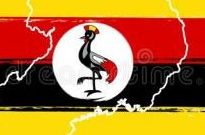Uganda Education System
Uganda is one of the most diverse and dynamic countries in Africa. Rivers flow through the country’s south, spilling into and out of countless small and large lakes, and combining with the region’s abundant rainfall to water its fertile soil. In the north, where rain and waterways are rarer, the land supports herds of domesticated animals—goats, cattle, and sheep—and pastoralism has historically formed the basis of the region’s economy. In between, snowcapped mountains rise in the east, separating the landlocked country from neighboring Kenya, while the continent’s largest oil reserves lie beneath the surface in Uganda’s west.
Uganda’s people—the most ethnically diverse population in the world, with more than 24 ethnic groups—speak more than 40 languages. The country has one of the world’s fastest growing populations as well: More than 1.5 million Ugandan babies are born each year.
This diversity and dynamism have inspired ambitious goals. In its 2015/16 to 2019/20 National Development Plan, the Ugandan government, hoping to reap the harvest of the country’s vast demographic dividend, outlined its aim of achieving lower-middle-income status by 2020, and upper-middle-income status by 2040.
Education System in Uganda
| Education | School/Level | Grades | Age | Years | Notes |
|---|
| Primary | Primary | 1–7 | 7–13 | 7 | 7+4+2 | |
| Middle | Lower Secondary – Ordinary Level | 14–17 | 4 | Uganda Certificate of Education | ||
| Secondary | Upper Secondary – Advanced Level | 2 | Uganda Advanced Certificate of Education | |||
| Vocational | Vocational/Technical | 3 | ||||
| Tertiary | Bachelor | 3–4 | ||||
| Tertiary | Master | 1–3 | ||||
| Tertiary | Doctorate | 1–3 |
Primary Education
Despite its best intentions, there a few really free state schools in Uganda, and the quality of paid private schools varies tremendously too. The education program that runs from February through to December, begins with 7 years of primary school education. For pupils in a class size of up to one hundred who fail to pass their leaving examinations, this ends their hopes.
Middle Education
The first phase of secondary academic education takes 4 years, at the end of which time students must pass their O-Levels before proceeding further. Alternatively they may attend a technical college for 3 years instead, and then go on to study at a technical institute, or primary teacher training college for example.
Secondary Education
Like so much of Ugandan education, secondary schooling still follows the British academic model where traditional subjects continue to be taught. A successful A-Level pass opens up the possibility of tertiary education for the lucky few who made it this far.
Vocational Education
Uganda is riddled with unemployment and young people without much hope. An urgent need exists to kick-start the economy. Many foreign aid agencies and governments are working hand in hand with local authorities, in an attempt to turn this into a reality.
Tertiary Education
There are 5 state universities, 11 religiously-affiliated universities, and 10 private secular universities in Uganda. There are also 4 technical colleges, of which 1 is private. Of the Ugandan students who qualify for tertiary education less than 50% find places though.
The second oldest, and by far the largest institution is the University of Makarere founded in 1922 and sited on a hill overlooking Kampala. It has a number of campuses, and 8 halls of residence, of which 2 are for women. Click here
Grading System in Uganda
Grading Scales:
9-point
| Grade | Scale | Grade Description | US Grade |
|---|---|---|---|
| A | 1.00 – 2.99 | Pass with Distinction | A |
| B | 3.00 – 4.99 | Pass with Credit | B |
| C | 5.00 – 6.99 | Pass with Credit | B |
| D | 7.00 – 7.99 | Pass | C |
| E | 8.00 – 8.99 | Pass | C |
| F | 9.00 | Fail | F |
Post-secondary
| Grade | Scale | Grade Description | US Grade |
|---|---|---|---|
| A+ | 90.00 – 100.00 | Exceptional | A+ |
| A | 80.00 – 89.99 | Excellent | A |
| B+ | 75.00 – 79.99 | Very good | B+ |
| B | 70.00 – 74.99 | Good | B |
| B- | 65.00 – 69.99 | B- | |
| C+ | 65.00 – 69.99 | Fairly good | C+ |
| C | 60.00 – 64.99 | Fair | C |
| D+ | 55.00 – 59.99 | Pass | C- |
| D | 50.00 – 54.99 | Marginal Pass | D |
| E | 45.00 – 49.99 | Marginal Fail | D- |
| E- | 40.00 – 44.99 | Clear Fail | F |
| F | 0.00 – 39.99 | Bad Fail | F |
Most Common
| Grade Description | Division | US Grade |
|---|---|---|
| First Class Honours | A | |
| Second Class Honours | Upper Division | AB |
| Second Class Honours | Lower Division | B |
| Pass | C |
Makarere University
From 1997/98 Academic Year
| Grade | Scale | US Grade |
|---|---|---|
| A | 80.00 – 100.00 | A |
| B+ | 75.00 – 79.90 | B+ |
| B | 70.00 – 74.90 | B |
| B- | 65.00 – 69.90 | B- |
| C+ | 60.00 – 64.90 | C+ |
| C | 55.00 – 59.90 | C |
| C- | 50.00 – 54.90 | C- |
| D+ | 45.00 – 49.90 | D+ |
| D | 40.00 – 44.90 | D |
| D- | 35.00 – 39.90 | D- |
| E | 0.00 – 34.90 | F |
